Efficiency Benefits and Drawbacks of Implementing ICT in Tourism and Hospitality Industry
With the advent of Information and communication technology (ICT) tools management in tourism and hospitality sector has become easier (Akehurst, 2008). Majority of the hotels are now able to manage their customers and functions with the help of e-tourism, e-promotions, e-booking and e-commerce systems. The use of the official websites, social sites and also mobile tourism apps have helped different hotels in the tourism sector to keep connected with the customers about the recent offers and packages. There are several companies in the hospitality and the tourism industry that engages in the application of the ICT in the tourism industry that helps in minimizing the time and also increases the efficiency of the operations in the tourism industry. There are various activities that can be conducted with the help of the ICT applications in the hospitality industry like check-in and check-out service, social media networking, room booking, acquiring details of the hotels etc.
Does The Intricacy of The Topic Intimidate You?
Tame Your Fear with Unmatched Assignment Help Services from Professional Writers.
Travel apps also allow the customers to check conveniently the flight and train timings online, to get reviews and ratings about the destinations, hotels and airlines services and also to book online tickets. According to (Ali and Frew, 2014) the use of ICT tools have reduced the work load of the employees in the hospitality sector. For instance the travelers don’t have to wait in long lines at the airport for check in because all international airports are now equipped with auto check in systems. Thus it is evident that there are several advantages of using ICT in the industry, there are certain drawbacks. The application of ICT can be very expensive for the organizations but it can provide significant benefit to the consumers. It can be difficult for smaller organizations to implement the ICT technology due to its extensive cost. Another disadvantage of the measure is the security risk that is seen in case of ICT use due to high cyber crime rate. The social media has also played significant role in ICT application in the industry. The social media network like facebook and twitter are used extensively in recent times as promotional tools and it can also be used as information and feedback space for various organizations.
Located in the commercial and business area of Millenia Singapore, Ritz Carlton hotel is run by Ritz Carlton group of company which has over 84 luxury hotels in around 26 countries. The Singapore branch was opened in 1996 with a view to provide comfortable and luxury service to all eminent guests (THE RITZ-CARLTON, 2015).
The visitors of Ritz-Carlton can discover the fact that a traditional canvas is not always required for the work of art. The hotel has a stunning structure and it is designed by Kevin Roche, who is Pritzker price-winning architect. The hotel has contemporary style and it has subtle oriental touches against the backdrop of city skyline and Marina Bay. The guests of the hotel can experience of a luxury five star hotel and they can immerse in visually stimulating sight with 4,200 contemporary art pieces. There are luxury restaurants in the hotel and these are perfect venue for receptions and weddings as the hotel offers exquisite and state-of-the art facilities to the customers (THE RITZ-CARLTON, 2015).
Facilities and Services Provided by Ritz Carlton Singapore
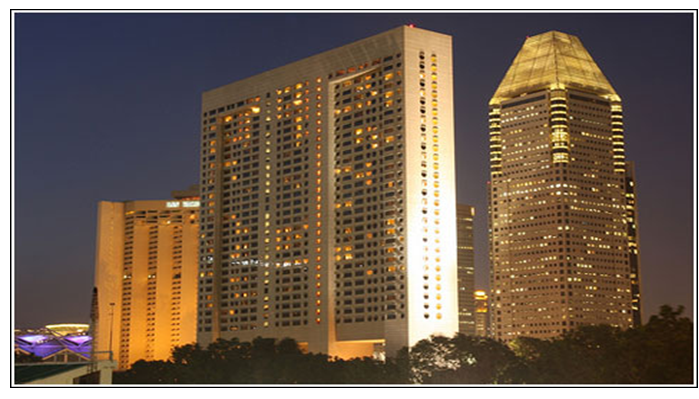
The hotel is designed to provide external views of Marina Bay or Kallang Bay from all 680 guest rooms. For the entertainment facilities the hotel provides roof top club, private lounge, rooms equipped with Bulgaria bath facilities, flat screen televisions and personal butler service. The hotel comprises of 32 floors and 2 basements and provides two ranges of food restaurants namely the Signature restaurant and Greenhouse restaurant to serve the different ranges of customers (THE RITZ-CARLTON, 2015).
The hotel serves various business clients by organizing business meetings, product launches and fashion shows within the tropical themed garden, 12 meeting rooms and function rooms in the premises. The management of the hotel also arranges for cheap holiday packages of Singapore and facilitates easy e-bookings through online commerce system.
The research aims to determine the effects and impacts of the tools of Information and communication technology within the overall hospitality and tourism sector keeping in mind the case of Ritz Carlton Millenia Hotel Singapore.
- To analyze the effect of ICT on the overall hospitality and tourism sector
- To analyze the effectiveness of the ICT tools in the business process of Ritz Carlton Millenia Hotel Singapore
- To recommend the various tools that can be suitably used by the Ritz Carlton Millenia hotel to make its service better
This chapter aims at providing an in-depth knowledge about the ICT applications used in the hospitality and tourism sector. Further the chapter gives an overview of the features and services of Ritz Carlton Hotel, Singapore and describes the objectives and the aim of the researcher behind conducting of the study.
This chapter deals with the analysis of the various concepts and academic theories in relation to use of ICT in tourism and hospitality industry. The chapter will help the researcher to progress with the research based on the information collected from the academic journals and books.
According to (Andreu et al., 2010) ICT combines all kinds of modern technologies like satellite systems, mobile apps, video conferencing and e systems which have enabled the tourism as well as all industries to develop a proper management of business and customers. The four major aspects of ICT that are used within any organizational framework are namely the hardware or the external devices, the software or the programs, telecommunication services and also the human ware which comprises of techniques of managing the customers effectively.
Balaguer and Pernías, 2013, opined that the use of the telecommunication software like social media apps, Google plus apps, Smartphone apps , travel apps have helped the customers and the managers of tourism industry to stay connected at all places of the world. The hardware or the external devices like the digital television, smart phones, laptops and computers, security machines, e bill payment systems have also contributed in reduction of time as well as cost of organizations.
In the recent years the organizations have also implemented human software systems like customer relationship management (CRM), management information system (MIS) and Data base management system (DBMS) for the better management of the customers’ demands.
The ICT plays vital role in increasing the efficiency and the productivity of the organizations and it can also improve the communication process of the organizations. An organization can make effective decisions on the basis of the technology and it also manages the procedures and processes of the business in terms of information collection (Barreda and Bilgihan, 2013).
Catering to Business Clients and Leisure Travelers
Compared to other sectors of the global economy the tourism industry in one of the fastest growing sector generating around more than 35% of the total global services
Hence Berne, Garcia-Gonzalez and Mugica, 2012 opined that effective and high speed ICT infrastructure and software applications on being used in the tourism sector allow customer management and supply chain management of the companies. Following benefits are noted in the tourism and hospitality sector due to use of ICT technologies.
- The hotels and travel companies are able to provide individualized and personalized information on travel packages and hotel rates on their websites
- With the social and economic ratings of the destinations and the hotels in the social media networks the customers are able to chose the desired location and hotel
- Helps to strengthen the brand image through promotions of press releases and new discounted packages though the websites and Twitter.
- Quick and hassle free system of online reservation and online receiving of the payment has reduced the work burden of the employees of the hospitality sector.
- ICT facilities in the hotel rooms like wifi internet access, digital television and data ports make the accommodation pleasurable for the customers (Bowden, 2007).
ICT is one of the most useful and effective tools for managing the external environment of the hospitality industry. The organization can involve in effective communication with the consumers by using appropriate ICT technology. Here several social media networkd like facebook and twitter can be used to interact with the consumers. On the other hand, interaction with the consumers can also be done by using other video calling tools like box maul, hotmail, Gtalk, skype etc. the consumers need to be updated regarding various facilities and the services and that can help in maintaining customer relations, So it can be said that the ICT is one of the effective measures of achieving the goals and objectives of an organization.
In present scenario most of the hotels use the ICT facilities in order to input the documents of the customers at the time of check-in. It is known that the use of smartphones has been extensive in recent times and it is also used to find hotels and in various locations and it also allows direct access to the required information by the users. The consumers can also make payments and book the rooms from the device (Chia, 2011).
DiPietro and Wang, 2010, opined that the use of the ICT tools have huge benefits for the travel and hotel companies. However the extensive use of the ICT technologies may bring about certain negative impacts on the business process of the organizations. The use of e payment system may result in wrong monetary transaction which will affect the goodwill of the company. Moreover the hotel websites or the ratings from the social media may be misleading in respect of information about the hotels and travel packages. Moreover Dudensing, Hughes and Shields, (2011), commented that majority of the websites of the Asian hospitality industry lacks mobile portability. Hence the customers are not able to view them as and when required. In some cases it is also found that the employees of the hotel or the tourism industry don’t have proper training of ICT use.
It is evident that ICT implementation in any business unit can provide extensive benefits to the organizations. In the hospitality industry, ICT can significantly increase the efficiency of the operations and it can provide several opportunities to the organizations as well as the consumers. In present times each and every hotel has their own websites that is created for providing open access information to the consumers. In various social network sites, the hotel creates pages for interacting with the consumers (Gjerald and Lyngstad, 2015).
As per the data of Travel Industry Association of America the products of the travel and tourism industry are one of the most frequent online transacted products. Most of the tourism products are purchased through e commerce or m commerce. The concept of E tourism includes concepts of e airlines, e hospitality, e tour operators, e travel agencies and e destinations.
E airlines: Since 1962 the airline authorities in different countries have introduced the e reservation system which enabled the customers to get information relating to the best routes and fares along with availability of travel agencies in the display board. This made the flight system convenient for the tourists (K, 2014).
E hospitality: ICT tools have been extensively used in the hotel operations reshaping the marketing function and improving the total efficiency of the operations as well as the work force. The organizations with large departments, transactions, arrivals, departures and reservations find the use of ICT tools effective for the management.
E tour operators: The tour operators require the ICT tools for constant interaction with their partners for arrangement of the accommodation and transportation purposes. The introduction of intranets, extranets and internet has helped the tour operators to co ordinate and exchange timely information and resolve potential problems. For instance some of the tour operators allow consumers to make online alteration of their tour packages and also make suggestions for their preferred food items (Lu and Stepchenkova, 2014).
E destinations: The uses of the tools of Destination management system (DMS) have helped to combine the tourism supply at destination. The Destination Integrated Computerized Information Reservation Management Systems (DICIRMS) helps the hospitality sector by integrating all information required for tourism industry as well as destinations.
With the introduction of ICT websites promotion has become an important aspect of online promotion of the hospitality and tourism industry. Hence web evaluation of the company websites of the hotels and tour agencies are an important task on the parts of the management of the hotels and the tour agencies (Minghetti and Buhalis, 2009).
Here the quantitative approach can be considered as well for the web evaluation. The numerical data measurement like flow of traffic can be measured using the following tools.
Technology Appetence Model (TAM):
- Perceived Usefulness: the job performance can be more effective with the help of perceived usefulness as it will increase the ability of relevant information search.
- Perceived Ease of Use: the site needs to be made user-friendly and thus interactive design needs to be used for navigating the searching methods for the provision of exact searcg option for the users (Novak and Schwabe, 2009).
In this diagram, the Technology Appetence Model is shown.
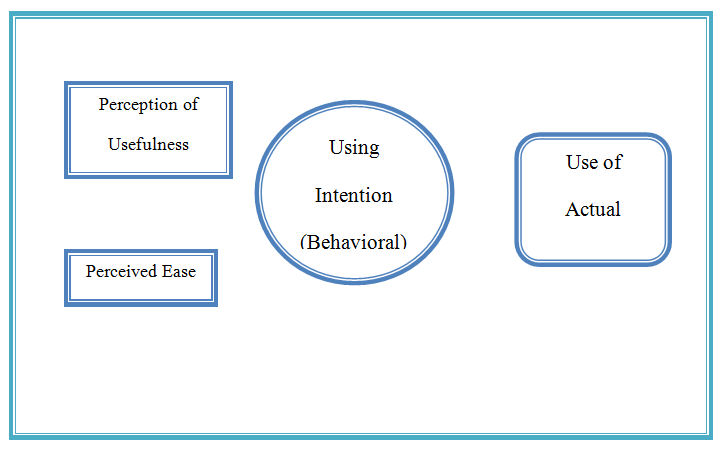
For managing and defining the websites, the perception of the users is very important. The perception of the users can also help in maintaining the quality of the website by filling the performance gap (Richard, Thirkell and Huff, 2007). Here several qualitative approaches can be used for analyzing the quality of a website like interactivity, usability, design, and coverage accuracy etc. The most appropriate technique for the evaluation of a website is DCIU that is Design, Contents, Interactivity and the Usability.
- Design: the design refers to the visual attractiveness of a website or how the website is presented. The use of layout, pictures, color, font size, animations etc can increase the appeal of the website. Thus the design of the website can increase the attractiveness of the users (Stepaniuk, 2014).
- Contents: the contents are very important part of the website as it is the main source that needs to be accessed by the users. It is very important to include all the relevant information regarding the organization and add various applications that can provide complete satisfaction to the users.
- Interactivity: the interactivity is another important feature or quality of a website. The website should include the responsiveness or the communicative means for the users so that they can interact within the website with the hotel (Šerić and Gil-Saura, 2012).
- Usability: It is very important that the website is user-friendly as it can increase the customer satisfaction and the users can easily gain access to information and it also increases the efficiency of the website. There are several aspects such as layout of booking, feedback and enquiry area, blog page, advance booking, navigation, contrast, for the hotel website.
Search engine is also one of the effective tools of ICT that can be used for benefitting the organizations in the hospitality industry. There are multiple search engines in the industry like Google yahoo, Bing, MSN. It is evident that most of the people use these search engines to gather information regarding the hotels. Thus it is very important to gain a good ranking in these search engines so that the value can be optimized. The following tools can be used for improving positions in the search engine (Richard, Thirkell and Huff, 2007).
The hotel websites can gain better position in the search engine with the help of Search engine marketing. It can provide effective position to the hotel website. Most of the developers use paid SEM for increasing the traffic of the website.
Search Engine Optimization (SEO): the SEO can also be used for improving the presence of the hotel website in the search engine. Various factors can be considered here for the high listings of the website in the search engine. These factors are accuracy of keywords, images, videos etc (Lu and Stepchenkova, 2014). When a hotel website gains higher visibility, it attains higher ranks. Some of the techniques of increasing the rank is SEO, SEOmoz, Likscape etc.
In this chapter several theories are presented related with the ICT and how it can be used or the benefits of the hotels in the hospitality industry. Here several tools and techniques used in ICT are also discussed.
This chapter deals with the identification of the different techniques and the philosophies that will be used by the researcher in the following study. The chapter will show the justification behind adoption of the chosen philosophy, approach, methods and designs. In order to critically evaluate the effectiveness of the ICT tools the researcher has taken the help of different books, academic journals, reviews and blog opinions (Lu and Stepchenkova, 2014). This chapter outlines the use of appropriate methods which has helped in completion of the research.
According to Turabian, (2007) research philosophy is the type of mindset that the researcher is about to adopt at the beginning of the research. The mindset affects the results of the research. The researcher has undertaken the post positivism philosophy for presentation of the ideas by analyzing the theories, background information and values because this will help the researcher to make an in-depth analysis of the effectiveness of ICT in the tourism sector.
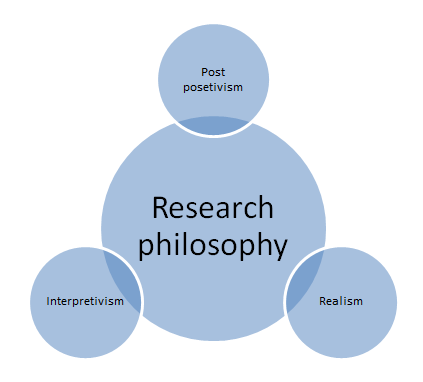
Majority of the surveys about the hospitality industries are conducted with the opinions of the customers. The researcher in this study will adopt two major approaches namely the Quantitative approach and the Qualitative approach. Turbian, (2007) opined that quantitative approach deals with analyzing the opinions of the customers using various statistical methods like SPSS, excel etc. On the contrary the qualitative analysis will help the researcher to evaluate the responses of the managers and the internal employees of the organization.
In this case the researcher will use the quantitative approach in order to evaluate the opinions of the customers of Ritz Carlton in analyzing the effectiveness of the ICT tools within the hotel. Further with the help of the qualitative techniques the researcher will be able to analyze the responses of the managers of Ritz Carlton. For evaluation of design, content, interactivity and usability (DCIU) the qualitative responses are to be used.
Creswell, (2003) opined that research design is the blue print of the research methods that are to be used for the purpose of research. Hence selection of appropriate design is very important to the success of the research study. There are three different types of research designs namely explanatory, exploratory and descriptive.
For the purpose of convenience the researcher has used the descriptive design in the following study. Creswell, (2003) opined that descriptive design helps a researcher to observe the facts about the research and make surveys about the related topics for conducting of the research. Hence the researcher here will be able to make an in-depth analysis of the topics like th website effectiveness of Ritz Carlton and the ranking of the hotel in SERP.

The use of appropriate data collection methods will help the researcher to collect the necessary data for the evaluation purpose. The researcher in this study has selected the online survey method for the collection of the responses from the users of online services of Ritz Carlton. The use of the online survey methods have also helped the researcher in maintaining low budget for the study and also helped the researcher to gather information about other hotels in Singapore.
The researcher in this study has used structured questionnaires for the purpose of online survey. According to Cresswell, (2003) the use of this questionnaire enables the researcher to make low involvement levels and include high number of responses. The use of the structured questionnaire will make it easy for the online respondents to quickly mark the correct option from among the different stated options in the questionnaire. The researcher has used 20 multiple choice questions within the structured questionnaire to analyze the effectiveness of the Ritz Carlton websites in terms of user friendliness, contents and designs.
The researcher has used a unique method for the collection of the data about the website. Among the total population the researcher has targeted the potential group of people who are planning to make trips in the recent future to make a visit to the official website of Ritz Carlton. After the browsing of the website the group of customers were asked to fill up the online survey forms. This has helped the researcher to understand the effectiveness of the website of the hotel to the users. Moreover the researcher has also taken the opinions of the group of people who have already availed the services of Ritz Carlton to understand their level of satisfaction.
According to Creswell, (2003) generally two types of sampling methods are used namely probability sampling and non probability sampling. The researcher in this case has used the non probability sampling method for the purpose of selection of target samples. The non probability sampling method has helped the researcher to follow a purposive method for the selection of the target sample population. On the contrary use of the probability sampling would have made it difficult for the researcher to select purposively rather the sample population would have to be selected randomly which would have hampered the quality of the research.
The researcher has selected total 70 respondents as a sample size for the evaluation of the objectives of the research.
Different methods were used by the researcher for the purpose of analyzing the quantitative data collected from the online surveys. The methods like Excel spreadsheets and the functions like sorting, charting, conditional formatting, what if analysis, pivot tables, filtering and data analysis formulas were used for the purpose of making the tables and the graphs based on the responses of the customers.
The chapter shows the various techniques that the researcher has used in analyzing the responses of the customers about the effectiveness of the ICT tools in hotel Ritz Carlton, Singapore.
This chapter aims at presenting the findings and making interpretations about the responses based on the preparation of various tables and graphs to show the effectiveness of the ICT tools within the Ritz Carlton Hotel.





In the following diagram the age group of the respondents has been represented.
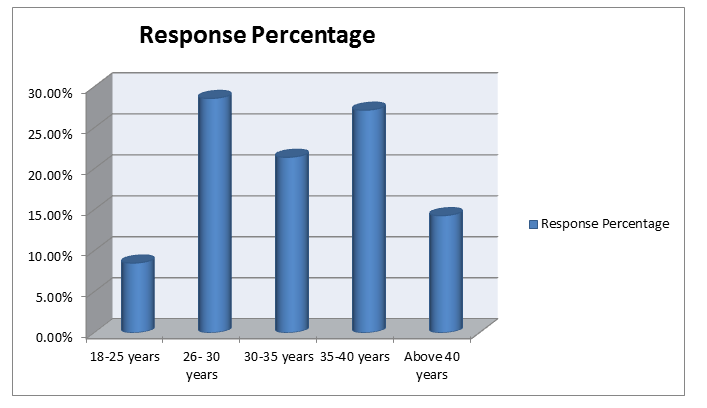
How many times do you pay visits to the website of hotels?

In the following diagram the percentage of the frequency of visits is represented.

How important is the design or the visual appearance of the hotel website?

In the following diagram the response rate of design is shown.

How significant according to you is the content provided in the hotel website?
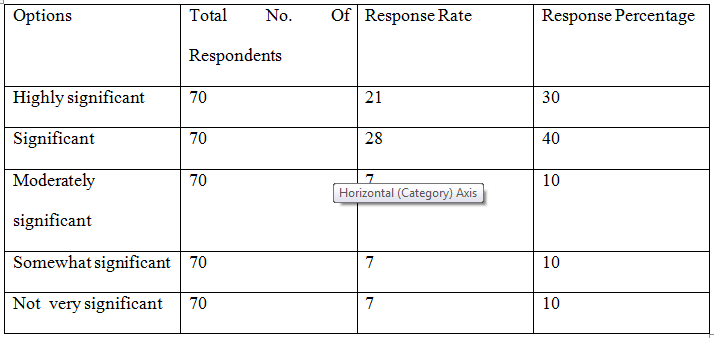
In the following diagram the response rate of the content is given.


In the following diagram the response rate for interactivity is given.


In the following diagram, the response rate of usability is given.

In the following table the overall satisfaction level of the users of the Hotel website can be presented.

In the following diagram the satisfaction level can be shown.

Chapter 5: Recommendations and Conclusion:
Here various recommendations can be provided. It is known that customer satisfaction is the one of the most important factors especially in the service industry. Thus organizations should take measure for increasing the satisfaction level of the consumers. In the Ritz-Carlton hotel several ICT technologies can be implemented for increasing the satisfaction level of the consumers. The use of mobile devices can be very effective for the portability and increasing the access network. The organization should continuously work on the hotel website and they should add more applications for increasing the interactivity and access to the website.
Conclusion:
Here it can be concluded that ICT is very useful in the hospitality industry. It is evident that the organizations can use various tools of ICT for increasing the satisfaction level of the consumers and they can also achieve increased efficiency in the market. In recent economic scenario, the level of competition is very high thus it is necessary for the organizations to gain the competitive advantage in the industry and increase their market share. The ICT technology can significantly help the companies to gain benefits in the market and it can increase the opportunity for the hotels for greater customer benefit and thus satisfaction. Here the website analysis of the hotels has been conducted as well and various findings are presented. Measures should be taken by the organization in terms of the results.
References
Akehurst, G. (2008). User generated content: the use of blogs for tourism organisations and tourism consumers. Service Business, 3(1), pp.51-61.
Ali, A. and Frew, A. (2014). ICT for sustainable tourism: a challenging relationship?. Inf Technol Tourism, 14(4), pp.261-264.
Andreu, L., Aldás, J., Bigné, J. and Mattila, A. (2010). An analysis of e-business adoption and its impact on relational quality in travel agency–supplier relationships. Tourism Management, 31(6), pp.777-787.
Balaguer, J. and Pernías, J. (2013). Relationship between spatial agglomeration and hotel prices. Evidence from business and tourism consumers. Tourism Management, 36, pp.391-400.
Barreda, A. and Bilgihan, A. (2013). An analysis of userâ€Âgenerated content for hotel experiences. Journal of Hospitality and Tourism Technology, 4(3), pp.263-280.
Berne, C., Garcia-Gonzalez, M. and Mugica, J. (2012). How ICT shifts the power balance of tourism distribution channels. Tourism Management, 33(1), pp.205-214.
Bowden, J. (2007). The Rise of the ICT-Dependent Home-Based Travel Agents: Mass Tourism to Mass Travel Entrepreneurship. Information Technology & Tourism, 9(2), pp.79-97.
Carvão, S. (2010). Embracing user generated content within destination management organizations to gain a competitive insight into visitors' profiles. WW Hospitality Tourism Themes, 2(4), pp.376-382.
Chia, A. (2011). Welcome to Me-Mart: The Politics of User-Generated Content in Personal Blogs. American Behavioral Scientist, 56(4), pp.421-438.
Creswell, J. (2003). Research design. Thousand Oaks, Calif.: Sage Publications.
DiPietro, R. and Wang, Y. (2010). Key issues for ICT applications: impacts and implications for hospitality operations. WW Hospitality Tourism Themes, 2(1), pp.49-67.
Dudensing, R., Hughes, D. and Shields, M. (2011). Perceptions of tourism promotion and business challenges: A survey-based comparison of tourism businesses and promotion organizations. Tourism Management, 32(6), pp.1453-1462.
Gjerald, O. and Lyngstad, H. (2015). Service risk perceptions and risk management strategies in business-to-business tourism partnerships. Tourism Management Perspectives, 13, pp.7-17.
K, S. (2014). Significance of User-Generated Content in Travel and Tourism: An Exploratory Study. Journal of Tourism & Hospitality, 03(03).
Lu, W. and Stepchenkova, S. (2014). User-Generated Content as a Research Mode in Tourism and Hospitality Applications: Topics, Methods, and Software. Journal of Hospitality Marketing & Management, pp.1-36.
Minghetti, V. and Buhalis, D. (2009). Digital Divide in Tourism. Journal of Travel Research, 49(3), pp.267-281.
Novak, J. and Schwabe, G. (2009). Designing for reintermediation in the brick-and-mortar world: Towards the travel agency of the future. Electronic Markets, 19(1), pp.15-29.
Richard, J., Thirkell, P. and Huff, S. (2007). An Examination of Customer Relationship Management (CRM) Technology Adoption and its Impact on Business-to-Business Customer Relationships. Total Quality Management & Business Excellence, 18(8), pp.927-945.
Šerić, M. and Gil-Saura, I. (2012). ICT, IMC, and Brand Equity in High-Quality Hotels of Dalmatia: An Analysis From Guest Perceptions. Journal of Hospitality Marketing & Management, 21(8), pp.821-851.
Stepaniuk, K. (2014). USER GENERATED CONTENT IN THE ASSESSMENT OF THE PERCEPTION OF THE TOURISM ENTITY IMAGE. ecoman, 19(3).
THE RITZ-CARLTON, M. (2015). Luxury Hotels Singapore - Singapore 5 Star Hotel | The Ritz-Carlton. [online] Ritzcarlton.com. Available at: https://www.ritzcarlton.com/en/Properties/Singapore/Default.htm [Accessed 16 Jan. 2015].
Turabian, K. (2007). A manual for writers of research papers, theses, and dissertations. Chicago: University of Chicago Press.
To export a reference to this article please select a referencing stye below:
My Assignment Help. (2015). Impact Of ICT On Tourism & Hospitality: Ritz Carlton Singapore Case Study. Retrieved from https://myassignmenthelp.com/free-samples/impact-of-ict-on-tourism-and-hospitality-industries.
"Impact Of ICT On Tourism & Hospitality: Ritz Carlton Singapore Case Study." My Assignment Help, 2015, https://myassignmenthelp.com/free-samples/impact-of-ict-on-tourism-and-hospitality-industries.
My Assignment Help (2015) Impact Of ICT On Tourism & Hospitality: Ritz Carlton Singapore Case Study [Online]. Available from: https://myassignmenthelp.com/free-samples/impact-of-ict-on-tourism-and-hospitality-industries
[Accessed 07 June 2025].
My Assignment Help. 'Impact Of ICT On Tourism & Hospitality: Ritz Carlton Singapore Case Study' (My Assignment Help, 2015) <https://myassignmenthelp.com/free-samples/impact-of-ict-on-tourism-and-hospitality-industries> accessed 07 June 2025.
My Assignment Help. Impact Of ICT On Tourism & Hospitality: Ritz Carlton Singapore Case Study [Internet]. My Assignment Help. 2015 [cited 07 June 2025]. Available from: https://myassignmenthelp.com/free-samples/impact-of-ict-on-tourism-and-hospitality-industries.
